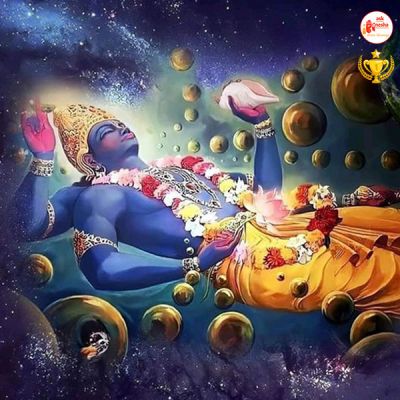Colors play a vital role in how we perceive and influence the world. It appears each color releases specific signals that end up affecting our physical and mental states. Scientifically, it has now been proven that colors can considerably affect a person’s moods, feelings, and emotions. It can affect them to such a point that it will end up increasing their metabolism, raising their blood pressure, and causing some eye strain. Therefore, let us today look at the significance of colors in Hinduism and their meaning.
Colors Meaning in Hindu Culture
Colors like red, yellow, and orange can not only invoke feelings of warmth and comfort. But these colors can also be responsible for passion, anger, or hostility towards others. Similarly, colors such as blue, purple, and green can not only summon calmness but feelings of sadness as well. There is also a lucky color for each day of the week.
Now in Hinduism, colors can play a major role and have deep importance which can cut across just purely decorative usefulness. You will generally see Hindu artists use colors on deities and their dresses denoting their qualities. When colors are used properly, they will help create an environment that will help keep a person cheerful. Red, yellow (turmeric), green from leaves, and white from wheat, etc. are some of the colors used in religious ceremonies.
Red
As you might have figured, red designates sensuality and purity. It is a color of utmost significance in the Hindu culture. Therefore, it is used in auspicious ceremonies such as marriages, festivals or child birth, etc. You might have noticed that a red mark (Tilak) is marked on the forehead during religious ceremonies or other vital ceremonies. There are of course scientific reasons behind Hindu traditions.
To show signs of marriage, a woman will put red powder (Sindoor) on her hair parting. Wearing a red saree during marriage is also common. During prayers of statues of deities and symbols, red is usually thrown on them. Red is the color of Shakti too. Deities that are brave, and charitable and protect us from evil entities have red colored dresses put on them as well. When a woman dies, for her cremation her body is wrapped in red clothing.
Saffron
Saffron is the most holy color for Hindus. The color itself represents fire. As we know impurities are burned away by fire, which can symbolize purity. Saffron can also represent religious abstinence. The colors overtone have a sacred meaning for any Hindu. Saffron is the color of the holy men and abstainers that have renounced society. When you wear the color Saffron, it symbolizes the search for light. The warrior caste Rajput's also have saffron as their color.
Green
Usually, green is a festive color and signifies life and happiness. Green can stabilize the mind as it symbolizes peace and happiness. It is also the color of nature as most trees, plants, grass, and some flowers are green in color.
Yellow
Yellow represents the color of learning and knowledge. Yellow symbolizes peace, meditation, and development. As it is the color of spring, it helps to activate the mind. Lord Vishnu, whose dress color is also yellow symbolizes knowledge. Other gods who wear yellow dresses are Lord Ganesha and Lord Krishna. At spring festivals, yellow clothes are worn, and yellow food is also eaten. Some girls will wear yellow to attract males and to keep away evil entities.
White
Since white as a color is a mixture of all seven colors, it symbolizes the quality of each of the colors a little bit. But mainly it signifies qualities such as purity, cleanliness, peace, and knowledge. Saraswati, the goddess of knowledge, is also seen wearing a white dress and sitting on a white lotus. You can chant Maa Saraswati mantras to improve your knowledge. The Brahmin caste is associated with white color. Many Hindu religious leaders will cover themselves in white ashes to represent their spiritual rebirth.
White is also the color people in Hinduism wear when they are mourning the death of someone. Many other Hindu deities will have a touch of white color on their dresses. During mourning a Hindu widow would also wear the color white.
Blue
Our creator has given blue to the maximum of nature. That is the color of oceans, lakes, sky, and rivers. Deities that have the qualities of bravery, masculinity, determination, the ability to handle difficult situations, and a stable mind are always represented with blue. Lord Krishna and Lord Rama are also depicted as being blue in color, as they spent most of their lives fighting evil and trying to protect humanity. Govardhan Puja is done to mark the victory of faith and humility.
Gunas, colors, and Goddesses
The Lord has described the three Gunas, their qualities, and articulation in the Bhagavad Gita.
Purity, passion, and inertia – these Gunas, qualities, O mighty-armed, born of Prakriti, bind fast in the body of the embodied, the indestructible. (XIV/5)
Knowledge arises from Sattva; greed from Rajas; heedlessness, delusion, and also ignorance arise from Tamas. (XIV/17)
These Gunas make up all the creation. Symbolized by the colors white, red, and black, these qualities provide balance to the natural world. Sattva, which is white symbolizes purity and harmony. Rajas is energy and passion and is represented by the color red. Tamas is inertia and ignorance and is expressed by the color black.
Hence as we have recognized, each color has a significant meaning and importance attached to it in Hinduism. These qualities reflect on us and give meaning to the world around us through these colors.





















 Translate
Translate